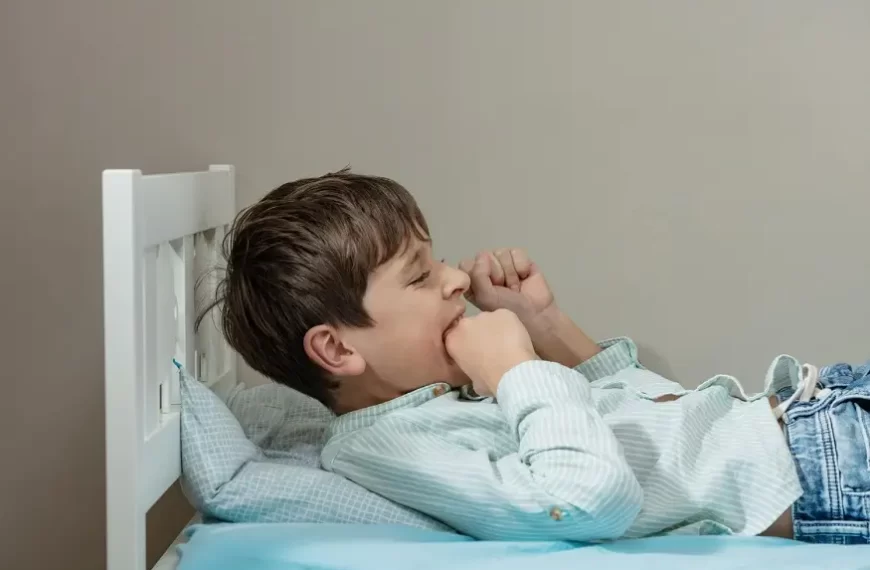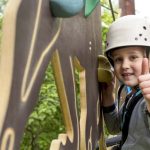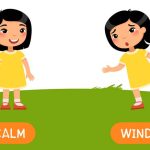Pediatric sleep apnea is identified by recurrent episodes of gasping, choking, or snoring during sleep. Frequent awakening hampers the quality of sleep and affects the child’s daytime activity and academic performance and thus, it is an important topic of discussion and we will be covering everything you need to know below.
TABLE OF CONTENTS
- What is sleep-disordered breathing?
- What are the symptoms of sleep-disordered breathing?
- How can I tell if my child has sleep-disordered breathing?
- What causes sleep-disordered breathing?
- Why are children more likely than adults to get sleep-disordered breathing?
- How does a doctor diagnose sleep-disordered breathing?
- How long will it take my child to get better?
- What happens if my child keeps getting sleep-disordered breathing?
- Can sleep-disordered breathing be prevented?
- What research is being done on sleep-disordered breathing in children?
- Where can I find additional information about sleep-disordered breathing in children?
- Conclusion
What is sleep-disordered breathing?
SDB is a spectrum of disorders ranging from primary snoring to severe obstructive sleep apnea. The diagnosis is suggested by restless sleep, choking or gasping episodes, confusion arousals, bed wetting, and snoring during sleep. Recent studies have shown a link between disturbed sleep and cognitive disturbance in preschool and school-going children.
What are the symptoms of sleep-disordered breathing?
- Noisy breathing or mouth breathing during sleep
- Frequent bed wetting (past the appropriate age)
- Sudden awakening with confusion
- Dry cough – severe enough to cause vomiting in young children
- Daytime sleepiness
- Aggressive, hyperactive behavior
How can I tell if my child has sleep-disordered breathing?
If your toddler has a restless sleep at night, they won’t be active and alert during school hours. This may be noted by the class teachers and behavioral or academic reports may soon follow. Sleep-disordered breathing can be a major deterrent to your child’s normal growth and development. Lack of restful sleep in this age group can lead to lower respiratory drive and growth hormone deficiency.
What causes sleep-disordered breathing?
Obstructive sleep apnea is known to occur in up to 5.7% of children and the most common cause in this age group is adenoid and tonsil enlargement. Large adenoids and tonsils not only prove to be a physical deterrent to the upper airway but are also a cause of inflammation of the nasal and pharyngeal passage, which results in frequent colds and coughs. The child, therefore, suffers from fragmented sleep and recurrent bouts of cough and cold.
Why are children more likely than adults to get sleep-disordered breathing?
Obstructive sleep apnea in adults is also fairly common – especially in overweight, inactive adults with a habit of smoking or alcohol intake. It is linked with severe risk to heart and blood pressure. Similarly, studies are ongoing to correlate the risk of heart problems in children who grow up with sleep-disordered breathing.
How does a doctor diagnose sleep-disordered breathing?
If your child is struggling with memory issues, problem-solving, and concentration in school, along with a history of frequent infections of the nose and throat, it is advisable to take them to a Pediatric ENT doctor for evaluation. The doctor would elicit a detailed history and conduct a physical examination. Usually, an X-ray of the face and neck would be required to see the adenoid size, obstructing the nasal airway. Large tonsils in the throat may be the reason for obstruction during sleep, as well.
The doctor may also like to prepare your child for a Drug-Induced Sleep Endoscopy – wherein the child is put to sleep in the operation theater while an endoscope is passed through the nose to see the level of obstruction during sleep.
Many centers have Sleep Labs or a facility to conduct sleep studies in the comfort of the child’s home so that oxygen and carbon dioxide levels can be measured during a sleep cycle, along with the number of awakenings – which help to determine Apnea – Hypopnea Index (number of times the oxygen levels drops during a sleep cycle).
AHI and DISE often provide a better understanding and quantification of the sleep cycle, and the pediatric ENT can thus offer remedial measures.
How long will it take my child to get better?
Sleep-disordered breathing can be managed with medication for a while, but may eventually necessitate surgery to get rid of the obstructing physical mass. Montelukast is available in tablet and syrup form, which is known to reduce the AHI as per some recent studies. Intranasal steroid sprays also help to mitigate the inflammation in the nose and pharynx, providing temporary relief in symptoms and a period of observation before the decision has to be taken – whether the child needs surgery or not.
What happens if my child keeps getting sleep-disordered breathing?
Fragmented sleep during the important period of growth and development (3-8 years) is a deterrent to the health of the child. Recent studies indicate that it may result in the development of early hypertension in children. Apart from the long-term effects, daily life is also hampered for the child as well as parents, since we all know how difficult it is to manage a cranky, hyperactive toddler!
Can sleep-disordered breathing be prevented?
There is a period of wait and watch that can be offered to the families, along with medication to help control the symptoms. Beyond the age of 5 years, most children often improve by themselves, as the size of the head and neck grows normally and the adenoids and tonsils regress. However, if the child is miserable despite medication and an adequate period of observation, a permanent solution may be warranted to improve the quality of life.
Exposure to cigarette smoking is linked to sleep-disordered breathing. A family history of allergies is also notable. Overweight children and those who are not physically active, as per their age may also suffer from this situation. However, this is usually a vicious cycle as a sick child may not have the energy to be as physically active as their peers of the same age.
Prevention of known allergens, and ensuring a playful, active lifestyle can often mitigate the symptoms and ensure a normal sleep cycle.
What research is being done on sleep-disordered breathing in children?
Sleep apnea is a well-known condition in adults visiting the ENT clinic with their children. Pediatric sleep apnea is known to be prevalent in Indian children, but at the time of publishing, there was only one large-scale study linking poor academic performance to this condition. Doctors are dependent on parents to recognize the symptoms and bring in the child for evaluation based on the common behaviors listed above.
Where can I find additional information about sleep-disordered breathing in children?
- Association of pediatric obstructive sleep apnea with poor academic performance: A school-based study from India https://www.ncbi.nlm.nih.gov/pmc/articles/PMC5846262/
- Sleep apnea among kids: Things to know https://indianexpress.com/article/parenting/health-fitness/sleep-apnea-among-kids-7595235/
- Impact of Chronic Adenoid Hypertrophy on Quality of Life Index in Children and Role of Adenoidectomy https://pubmed.ncbi.nlm.nih.gov/37974692/
- Role of Intranasal Topical Steroid in Pediatric Sleep Disordered Breathing and Influence of Allergy, Sinusitis, and Obesity on Treatment Outcome https://www.ncbi.nlm.nih.gov/pmc/articles/PMC3062224/
Conclusion
Sleep apnea is a distressing condition that affects the mental and physical health of the patient over some time. Emerging studies indicate that snoring in children is not innocent and may result in long-term deleterious effects. Children deprived of a good night’s sleep are hyperactive, unable to focus in school, and suffer from a lowered physical capacity to play and indulge in activities like other kids of the same age. 3-8 years of age is crucial in a child’s development as the brain and nervous system are growing so kids need adequate play and rest. If your child has enlarged adenoids or tonsils that cause snoring during sleep, it is advisable to get them checked and plan corrective measures.
















